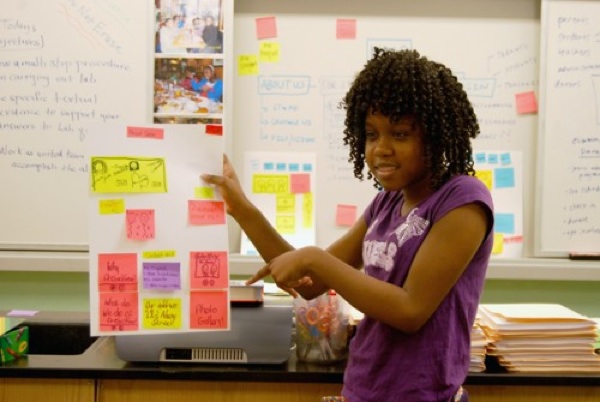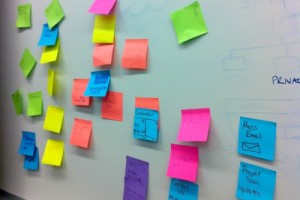WITH BUDGET CUTS AND TEACHER LAYOFFS dramatically reducing support systems for public school students nationwide, the situation for young learners looks bleak. A widespread critique of the liberal arts education system has been emerging in the press and among thought-leaders who believe that students are not learning important, practical skills that they need to become independent-minded and self-sufficient. Laura Seargant Richardson, of frog design, calls this the “creativity crisis,” and suggests that design be incorporated into basic curriculum. Too much emphasis on math and science can be a disservice to students as they enter the job world, she insists.

The concept of design-thinking has long been limited to elite firms who take a collaborative approach to problem-solving through phases of ideation, prototyping, and iteration. But in recent years, social entrepreneurs have begun incorporating design-thinking into their approaches to tackling social problems in the public sector.
Project: Interaction was started by two graduates of the School of Visual Arts’ Interaction Design MFA program. Inspired by a talk in which a designer urged them to teach interaction design to others in order to strengthen the profession, Carmen Dukes and Katie Koch wondered how they could bring design education to high school students. Over the course of one year, they interviewed educators, students, educational consultants, and entrepreneurs in order to get an idea of how their concept could become reality. They successfully pitched the curriculum to three schools, all of which accepted it, and chose one in which to prototype the project. Now they are teaching the design curriculum in an all-girls public school in Brooklyn, NY.
Koch and Dukes partnered with an after-school program, Project GROW, which focuses on offering meaningful activities for young girls. They are working with a small group of students to design the website for the program, providing a rare opportunity for young people to actually have an impact on their school environment, rather than simply receiving education or extracurricular activity as a service provided to them.
“It’s a two-hour-long class, and we are happy to have to so much time. It’s a small group, nine or ten students – the perfect-sized group to work on this kind of a project because everyone can have a job. The students had no web design skills; we are starting from scratch. They had basic web knowledge, but there is a lot of learning going on. They don’t always know why we make certain decisions for the site, like having log-in and registration. We’re hoping to have the site up by the end of January,” said Dukes and Koch.
We all remember times when school felt completely useless and abstract – for me, it was in chemistry class, for example, something I knew I would never use in my life or career. Project: Interaction is an exciting example of young people applying themselves to learn practical, real-life skills, and through that, becoming better problem-solvers and more confident in their abilities.
